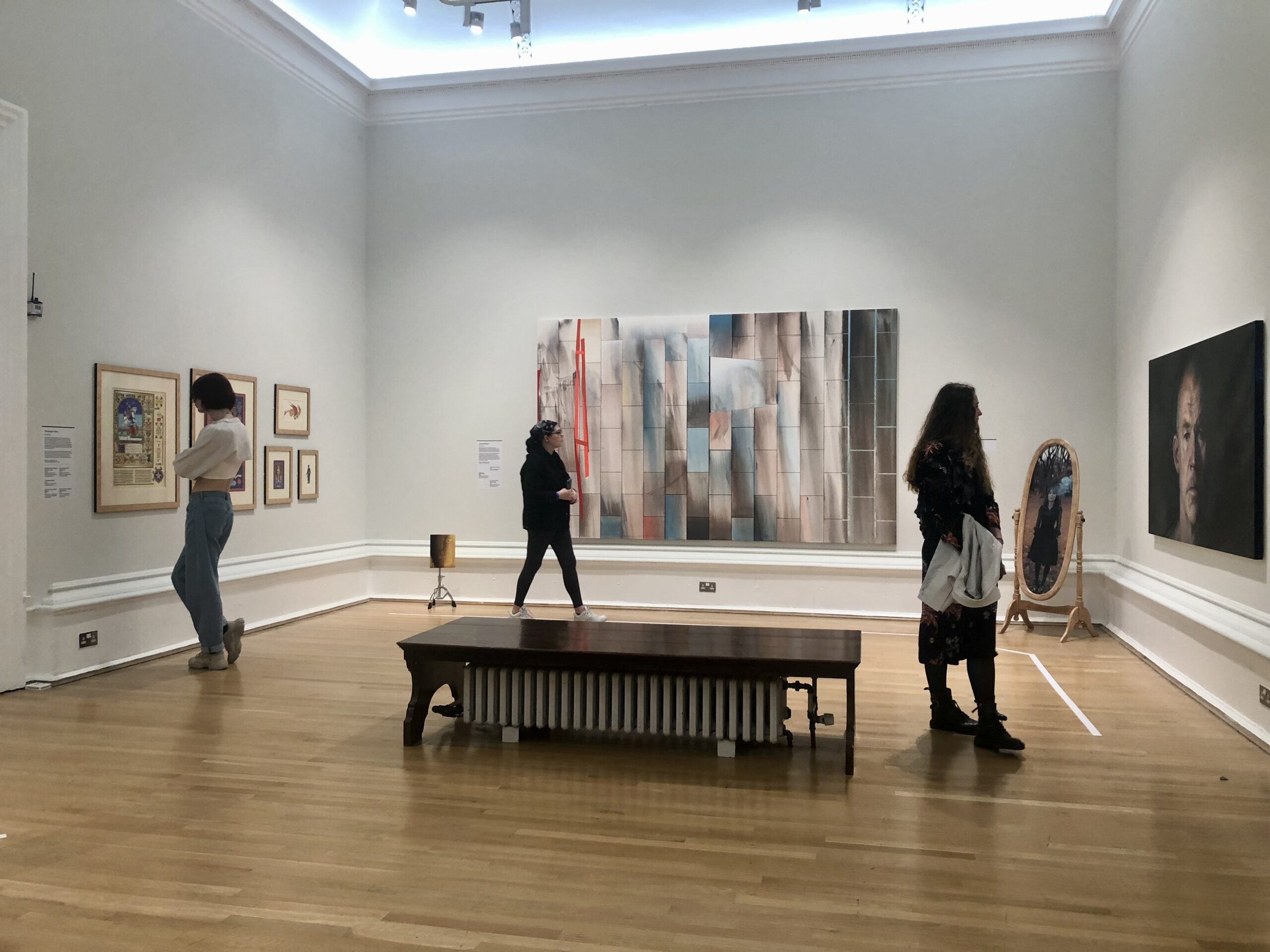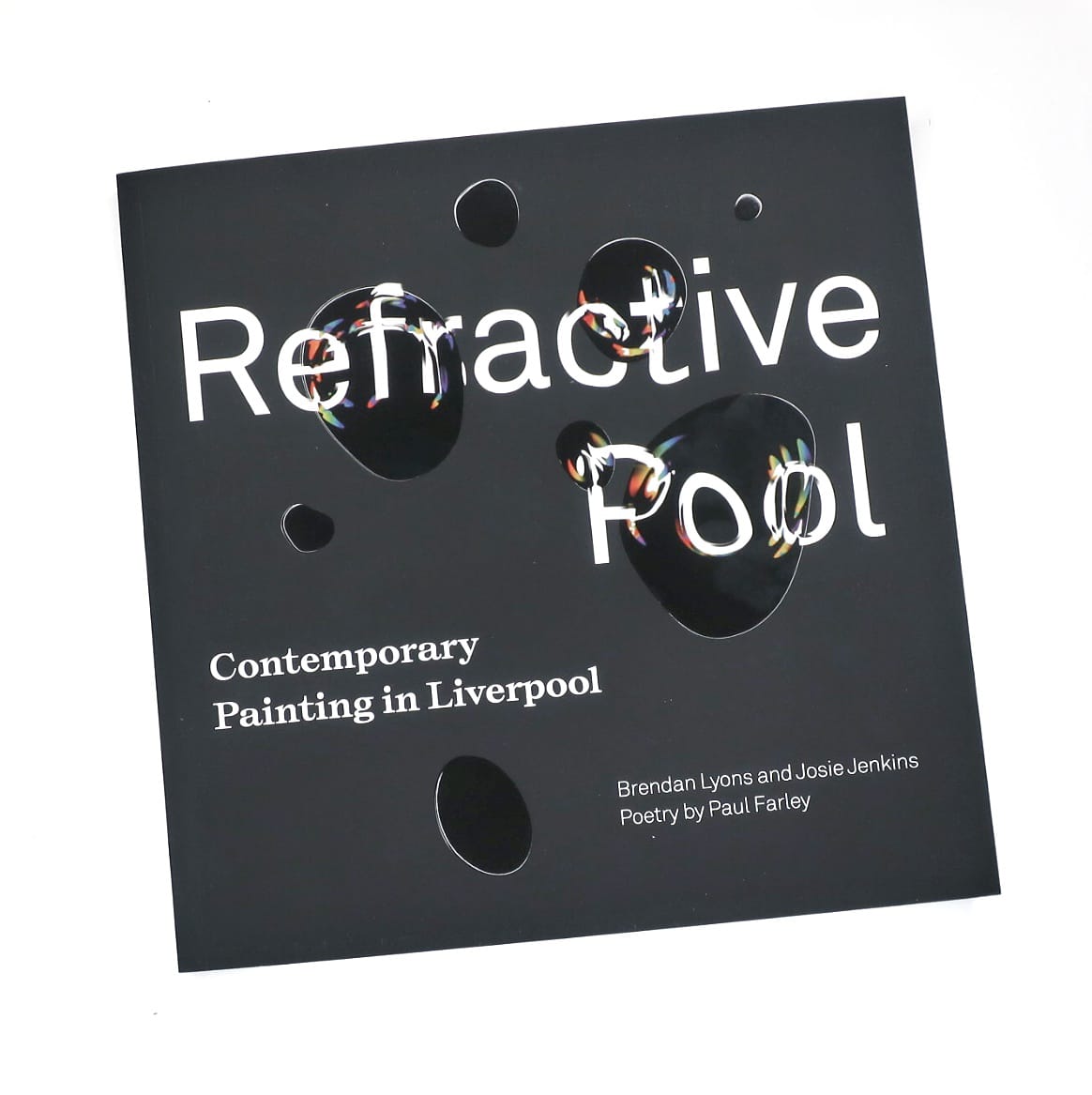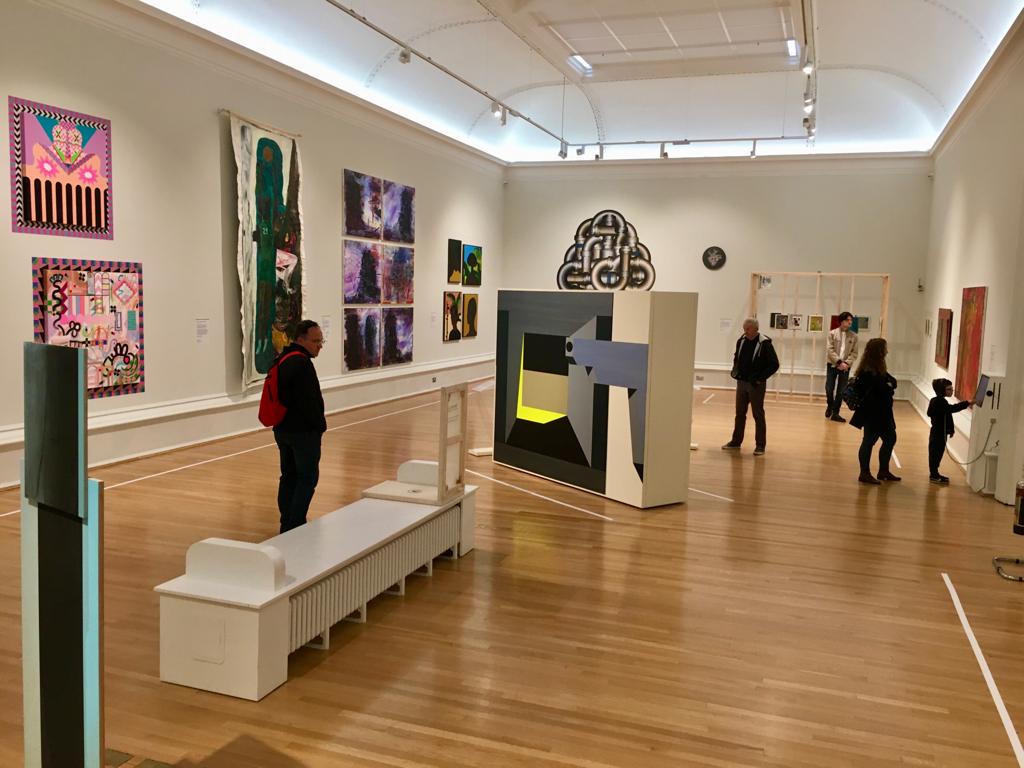The Refractive Pool @ The Walker – interview with Josie Jenkins and Brendan Lyons
June 21, 2022

The Refractive Pool @ Walker Gallery. Source: Josie Jenkins
In the last couple of years, it feels as though there has been a shift within the major galleries in Liverpool to recognise artists working on their doorstep and programme exhibitions in response. Emily Speed’s Flatland at Tate, Josie Jenkins and Sumuyya Khader at the Bluecoat are a few of the recent exhibitions featuring artists working in the North West. And now there is The Refractive Pool exhibition at the Walker.
The Refractive Pool features artists currently living and working in Liverpool who use the medium of paint as part of their practice. Curated by artists Josie Jenkins and Brendan Lyons, it’s an exciting exhibition with a diverse spread of artists and art work, ranging from early career artists to John Moores exhibitors, with diverging styles and practices. It also does some heavy lifting in terms of its ambition. In Jenkins’ words, “It’s an exhibition about paintings, about paint and about people.”
The exhibition emerged from a project initiated by Jenkins and Lyons in 2019 who wanted to promote, celebrate, exhibit and importantly, document, what was happening in painting in Liverpool. Lyons explains, “We felt like it hadn’t been done for decades. There is a bit of a lack of cohesion amongst studios and it was all a bit disparate. We just felt like someone needed to do it. We found that (in the past) when people wanted to research Liverpool [painting] they would lazily end up doing work about artists from the 60’s and 70’s and link them up with poets and musicians from then. Artists after that weren’t documented.”
Jenkins and Lyons started with a period of research, interviewing artists in their studios and publishing the interviews on The Refractive Pool website. While an exhibition was always an intention of the project, they also produced a symposium in collaboration with Liverpool Hope University in February 2020 exploring painting and the place of artists in the city and a creative book project printed in 2021. The book features 38 artists.
Lyons explains the thinking behind their approach: “We wanted to show the diversity of people, images, styles, background and race. We asked them to do a painting on a piece of perspex which we then photographed them with. It was a way of their painting and their image becoming a project. We wanted to do it physically rather than digitally.” The book gave the artists a platform to show what painting is to them in their practice. With the diversity of the work, rather than commission academic essays on painting – what it is and what it should be – they commissioned poet Paul Farley to write a poem, ‘The Studio’, which was themed around his memories of the city and the practice of painting.

The Refractive Pool poster. Source: Josie Jenkins
Liverpool’s thriving art scene and its DIY ethos is well-known, but sometimes hidden from those in the city who may not attend a studio show and visit the bigger galleries instead. “One of the things we’re doing with this exhibition is introducing artists to people,” says Lyons. “We were sure the audience wanted to see who the artists are in the city of Liverpool. As you know, Liverpool often promotes itself as being full of artists and they don’t always say who they are. So often institutions get the same group of artists they know – people at the upper end of their career. We wanted to show younger artists and artists who work at home who nobody knows much about.”
The Walker, to its credit, not only accepted Jenkins and Lyons’ pitch to host a painting show, it also gave them a lot more freedom than might be expected from a major institution to curate the show. Artists range from John Moores exhibitors like Pete Clarke, who’s work ‘painting doubt and distance… of lost content’ was purchased by the Walker for its permanent collection, alongside recent graduates like Zahra Parwez. To make the artists more visible to the Liverpool public, there are links to the artists’ social media and websites for viewers to find out more.
With the number of artists they had to work with, selection could have been problematic. Jenkins and Lyons were clear that they didn’t want to curate a show dictating how the audience should view Liverpool painting, but they also didn’t want to pack the exhibition with an academy-style hang. They also had the pressure of ensuring the quality of the work could stand up against the John Moores painting prize-winners exhibition in the adjacent galleries.
The exhibition is stronger for the edit. Having spent the time interviewing the artists and visiting their studios, Jenkins and Lyons had a sense going into the curation process of what they wanted to show. They aimed to push the boundaries of what painting is. Jenkins explains, “Obvious examples of that are Francis Disley’s work, where she ended up making work on a bench for us. Even Brendan’s is quite a good example of that, he makes paintings out of paint that aren’t necessarily traditionally stuck on the wall.”

The Refractive Pool @ Walker Gallery. Source: Josie Jenkins
As well as bringing local artists to the attention of a local audience, the Refractive Pool has brought artists to the attention of each other. Jenkins explains that artists studios have become more linked up in recent years and explains, “That was one of the aims (of the project) that it contributes to the community. We know that these artists now know each other.”
Having achieved some major milestones with the project in a short space of time while also contending with a global pandemic, I wondered if Jenkins and Lyons had come to any conclusions about painting in Liverpool. Jenkins responds, “Firstly, it’s very healthy. I would assess it (in terms of) this idea of whether there is something in particular going on and it seems that there isn’t something in particular, but Liverpool is very broad and you get a lot of different personalities and you get a lot of people making very different work.” Lyons adds, “I would say all the people in the show have got a strong personality in some way or another; there’s something about them. They don’t want to be part of a tradition and that shows in the show. Maybe the strength is the quality and the variety and what we wanted to do was to show it off.” Mission accomplished.
The Refractive Pool is showing at The Walker Art Gallery until 8 January 2023
Filed under: Art & Photography

Comments